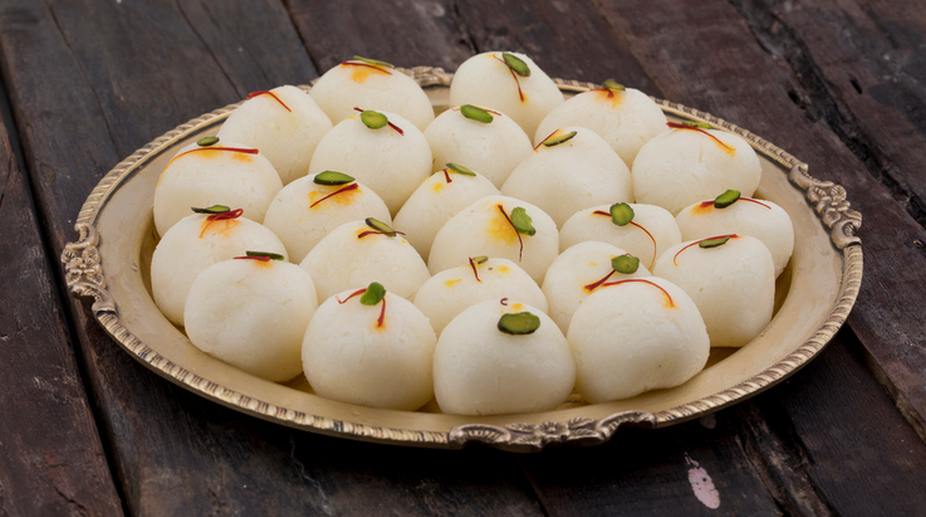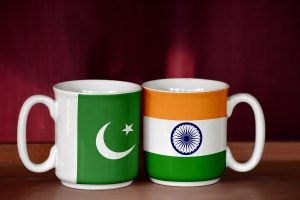Ending a two-and-a-half-year long ‘sweet’ spat with Odisha, West Bengal on 14 November won the Geographical Identification (GI) fight over one of the most popular sweets in India -’ the Rosogolla’. The GI authorities have ruled that West Bengal is the origin of rosogolla. “It has been settled under the GI Act that authenticates a product relating to either a geographical location, or community or society,” confirmed the GI Registrar office.
Chief Minister Mamata Banerjee too congratulated the state on the news, calling it a happy and proud moment. “Sweet news for us all. We are very happy and proud that #Bengal has been granted GI (Geographical Indication) status for Rosogolla,” she said.
Advertisement
Odisha had claimed that the sweetmeat originated from the Jagannath Temple in Puri, where it was claimed to be a part of religious rituals since the 12th century. Odisha calls it ‘Pahala Rasgulla’. However, in its original application to the GI, West Bengal had sought the GI tag on what they call “Banglar Rasogolla” (Bengal’s Rasgulla).
A GI tag is a sort of intellectual property identifier recognising the origin of a product. The GI registration office is based in Chennai. Once granted, the GI tag prevents unauthorised use of the geographical indication and boosts exports by giving it a unique identity.
The rosogolla is a syrupy dessert popular in the Indian subcontinent and regions with South Asian diaspora. It is made from ball shaped dumplings of chhena (an Indian cottage cheese) and semolina dough, cooked in light syrup made of sugar. This is done until the syrup permeates the dumplings. The dish originated in East India; in the past the present-day states of Odisha and West Bengal have variously claimed to be the birthplace of the dish.
In 2016, a committee formed by the government of Odisha stated that the sweet had its roots in Odisha Rasagola, a variation popular in Odisha offered at the Jagannath temple, Puri on the occasion of “Niladri Bije”, the return ceremony of deities towards the end of the Rath Yatra. Officials of the West Bengal government stated that they wished for a GI tag only for the local variety of Rasgulla known as ‘Banglar Rosogolla’ (Bengal’s Rosogolla), stating, “There is no conflict with Odisha. What we want is to protect the identity of our Rosogolla. Their product is different from ours both in colour, texture, taste, juice content and method of manufacturing.”
The dessert is known as Rosogolla or Roshogolla in Bengali and Rasagola in Odia. The name is derived from the words ras (“juice”) and gulla (“ball”). Other names for the dish include Roshgulla (Sylheti), Rasagulla, Rossogolla, Roshogolla, Rasagola, Rasagolla, and Rasbhari or Rasbari (Nepali).
Bengali historians contest the Odisha claim. According to food historians K. T. Achaya and Chitra Banerji, there are no references to cheese (including chhena) in India before the 17th century. The milk-based sweets were mainly made up of khoa, before the Portuguese influence led to introduction of cheese-based sweets. Therefore, the possibility of a cheese-based dish being offered at Jagannath Temple in the 12th century is highly unlikely. According to Nobin Chandra Das’ descendant Animikh Roy and historian Haripada Bhowmik, rasgulla is not even mentioned as one of the chhappan bhog (“56 offerings”) in the early records of the Temple; the name of the sweet was coined in Bengal. They also state that it would have been blasphemy to offer something made from spoiled milk (chhena) to a deity. However, Michael Krondl argues that Hindu dietary rules vary from region to region, and it is possible that this restriction did not exist in present-day Odisha.
In 1930, the introduction of vaccum packing by Nobin Chandra’s son Krishna Chandra Das led to the availability of canned Rasgullas, which made the dessert popular outside Kolkata, and subsequently, outside India. Krishna Chandra’s son Sarada Charan Das established K.C. Das Pvt Ltd in 1946. Sarada Charan’s younger, estranged son Debendra Nath established K. C. Das Grandsons in 1956.
In 2015, the Odisha government initiated a move to get (GI) status for the rasagulla made in Pahala. On 30 July, the people of Odisha celebrated “Rasagola Dibasa” (“Rasgulla Day”) to reaffirm Odisha as the place of the dish’s origin. In August, West Bengal decided to legally contest Odisha’s move to obtain GI Status. In 2015, the Odisha state government constituted three committees to stake claim over the sweet. The committees submitted their interim report to the government. Noted journalist and food researcher Bhakta Tripathy and a member of the committee had submitted a dossier containing historical evidence of the rasagola’s origins in Odisha. The Science and Technology department of the West Bengal government also started the process to get its own GI status for the dessert.
West Bengal can now finally claim its right as the place of origin of the famous sweet. The GI Registry, on 14 November 2017 granted West Bengal GI status for the sweet, syrupy delicacy, thus ending the state’s legal battle against Odisha. The letter from the Union Commerce Ministry says that there is no proof of the rosogolla having been available thousands of years ago and its texture and taste is completely different from what is available elsewhere in India. A detailed investigation by the Commerce Ministry said other claims that the rosogolla used to be available in states like Odisha since 11th century was unsubstantiated. Rosogolla is made of chenna. It used to be available only in Bengal, and particularly around Kolkata. The Ministry found that similar form of sweets made in Odisha and other parts of the country centuries ago were not made of chenna, but of kheer. Thus, the two could not be compared.
After a thorough study, it has been found that the juicy sweet ‘Rosogolla’ indeed originated from Bengal and not Odisha. “So it has been settled under the GI Act that authenticates a product relating to either a geographical location, or community or society,” said an official.
What was given as an offering in the Jagannath temple was completely different. Its first avatar was kheer mohana, which later evolved as ‘pahala rasagolla’ in Odisha.
The present day spongy rosogolla was made famous by the Das family of Bagbazar (mainly Nobin Chandra Das), which opened its first shop and prepared it in the 19th century. Apparently, the sweet was an instant hit with the British rulers. It is widely believed that prodded by demand during British rule, the rosogolla became part of the Kolkata household.
However, there are records of the rosogolla being a popular sweet even before the Das family made and sold it. It has been traced to other parts of Bengal as a sweet liked by then Governor-General of India, Warren Hastings who would eat it during visits to the Sovabazar royal palace near Bagbazar in Kolkata. It is also believed that before the Das family reshaped the sweet into present day rosogolla, it had already made its way into the Kolkata household thanks to the popularity of street food.
The writer is a former expert panelist on ‘IPR’ of National Institute of Science Communication and Information Resources (NISCAIR). He is also a retired Professor of International Trade and author of World Trade Organisation: Selected Sectors of Indian Economy. He can be reached at vasu022@gmail.com











